Back to > Major Fruits | Minor Fruits | Underutilized Fruits
![]()
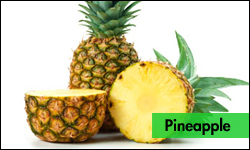 |
||
|
|
||
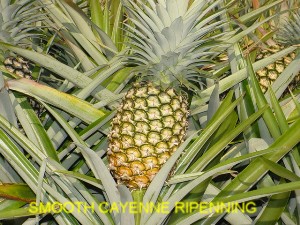 Smooth Cayene |
 Sarawak Sarawak |
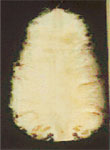 Sarawak Sarawak |
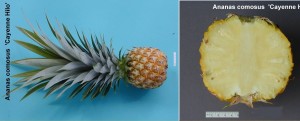 Cayenne Hilo Cayenne Hilo |
‘Bumanguesa’, ofVenezuela andColombia, is probably a mutation of ‘Perolera’. The fruit is red or purple externally, cylindrical with square ends, shallow eyes, deep-yellow flesh,very slender core but has slips around the crown and too many basal slips to suit modern commercial requirements.
‘Charlotte Rothschild’, second to ‘Giant Kew’ in size in India, tapers toward the crown, is orange-yellow when ripe, aromatic, very juicy. The crop comes in early. ‘Baron Rothschild’, aCayenne strain, grown inGuinea, has a smaller fruit 0.8-2 kg in weight, marketed fresh.
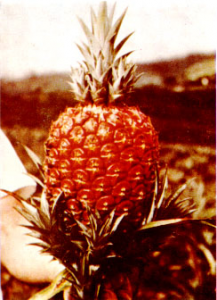 Bumanguesa Bumanguesa |
 Kona Sugarloaf Kona Sugarloaf |
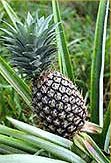 Kew Kew |
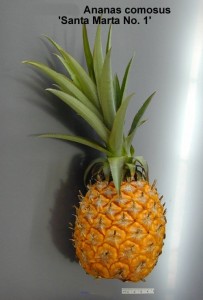 Santa Marta Santa Marta |
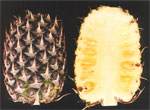 Hybrid 36 Hybrid 36 |
 Josapine Josapine |
 Red Spanish Red Spanish |
The related ‘Green Selangor‘ (also called ‘Selangor Green’, ‘Green Spanish’, and ‘Selassie’) ofMalaysiahas all-green leaves prickly only at the tips. The flesh is golden-yellow, often with white dots. This cultivar is grown for canning.
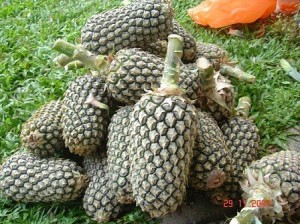 Selangor Green Selangor Green |
‘Queen’ (also called ‘Common Rough’ in Australia)
It is also the leading cultivar in South Africa, Queenslandand the Philippines. The plant is dwarf with short and very spiny, dark purplish-green leaves, compact, more cold and disease resistant than ‘Smooth Cayenne’. The plant sometimes produce robust slips in some variants and most have an average of 2 suckers or more which is sufficient for ratooning or replanting. The fruit is conical, deep-yellow, with deep eyes which require a thick cut to remove the peel completely; is less fibrous than ‘Smooth Cayenne’. It is juicy and sweet, of fine flavor with a small, tender core. Fruits are spiny, golden yellow in color and emit pleasant aroma and flavor when ripe. The fruits are harvested when eyes turns yellow. Average weight of fruit varies from 600 – 800 g. It possesses all the good organoleptic qualities. Juice is bright yellow in color. TSS varies from 10o to 14o Brix depending upon the stage of maturity and season. PH4 to 4.5. Water content 80% to 90%. It is sold fresh and keeps well. It is only fair for canning because of its shape which makes for much waste. Queen cultivars are robust and show higher tolerance to stress, pests and diseases than ‘Smooth Cayenne’. However they are susceptible to black heart disorder.
‘Kallara Local’is a little-known cultivar inIndia. Minor strains inThailand are ‘Pattawia’, ‘Calcutta’, ‘Sri Racha’,
Their cultivation is restricted to certain South American countries like Brazil, Ecuador, Colombia, Venezuela and Peru. Pernambuco has an erect growth habit, semi-vigorous with long spiny leaves. The fruits are small, slender and carried on long peduncles. The flesh is white, tender and juicy with low acid and mild flavour. Slips are prominent and numerous, occasionally to the extent of hiding the fruit. Perola is the best known in this group and the most important commercial cultivar inBrazil. It is very susceptible to fusariosis disease which is devastating inBrazil but not important here. ‘Mordilona’ is typified by the ‘piping’ leaf margin where a part of the lower epidermis folds over the edge of the leaf to give a completely spineless leaf form. ‘Perolera’ and ‘Manzana’ are the best known cultivars in this group; they are grown mainly in the northeastern Andes of Colombia andVenezuela. The irregular, cylindrical fruit is large (1.5 to 3 kg) with attractive yellow to orange peel borne on a long peduncle. The flesh is cream to yellow, firm and sweet. Numerous crownlets protrude from the base of the crown and the upper eyes and slips are numerous. ‘Perolera’ has high vitamin C content, is resistant to fusariosis disease and commonly used as a parent in breeding programmes.
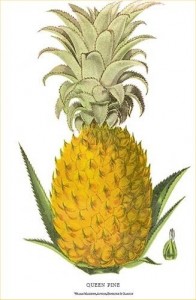 Queen Queen |
 MacGregor MacGregor |
 Victoria Victoria |
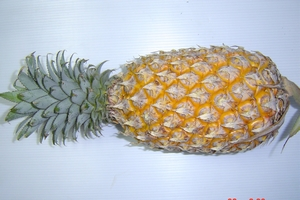 Phuket Phuket |
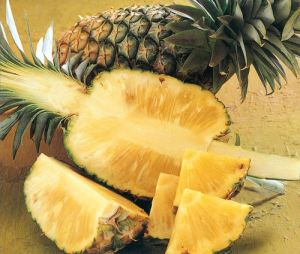 Sri Racha Sri Racha |
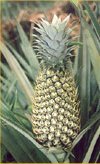 Mauritius Mauritius |
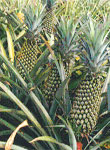 Moris Cultivar Moris Cultivar |
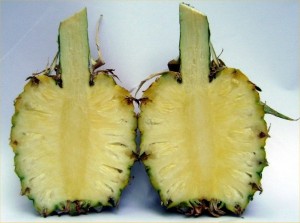 Pattawia Pattawia |
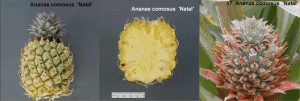 Natal Natal |
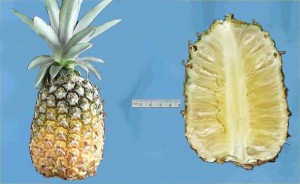 Pernambuco Pernambuco |


What cultivars are grown in Hawaii? K5